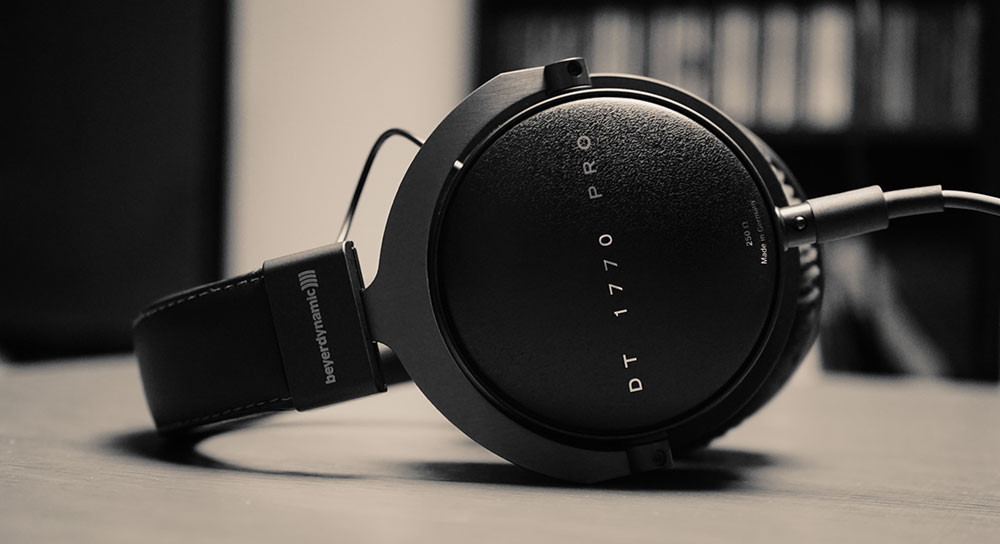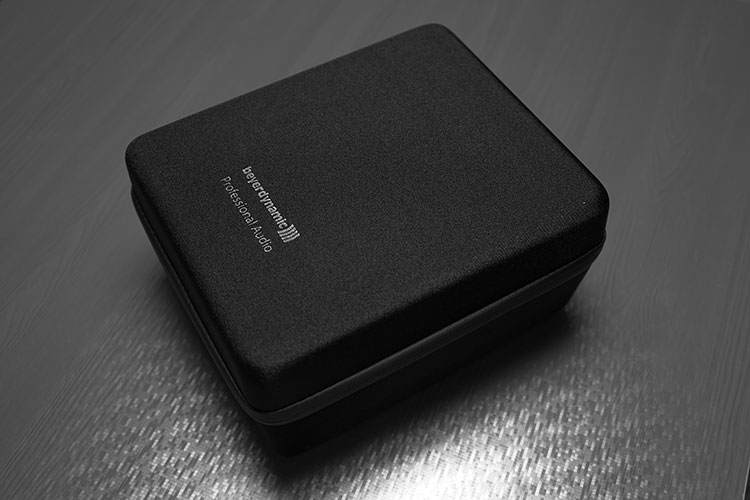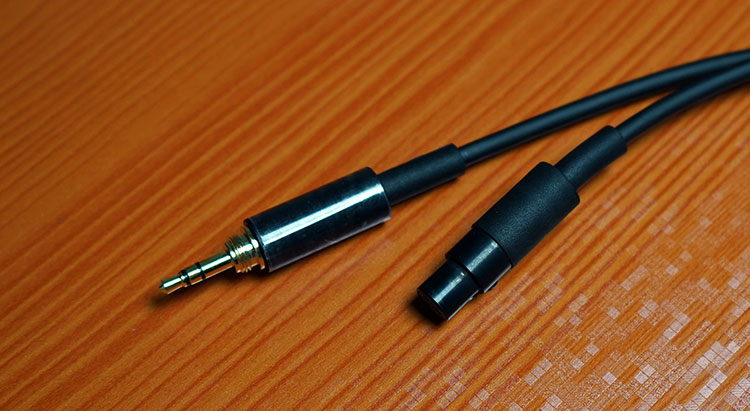DT 1770 PRO Sound Impressions
Summary
Beyer has plotted a very interesting frequency response into the DT 1770 PRO. Whilst it is far more refined than the original DT770 there are some interesting peaks and troughs that I feel is not there by accident.
Tonally the DT 1770 PRO is a spacious-sounding closed headphone, much more so than the DT770 making it sound a little harsher and more intimate by comparison. Definitely, the new Tesla driver sounds a lot more detailed than the old DT drivers that is for sure.
There is a musical dimension with the DT 1770 PRO but for me, the musicality of the DT 1770 PRO is not the same as say a Meze 99 Classic. They are dipped in some ways with a recessed mid-range but there is a bit of separation also from bass to mid-transition which makes it more suitable for EDM monitoring and just having some fun listening to genres of that ilk in general.
For a closed headphone, tonally the DT 1770 Pro’s coloration and timbre are not right for classical and orchestral works but it is a lot more suitable for synths and digital music.
Bass
Sub-bass response is excellent, tight, and well defined with a natural-sounding decay and very good articulation. Score one for the DT 1770 PRO and it stays pretty darn good until around 100-250Hz where it dips, and dips pretty hard at that, before coming back up again and straight-lining again until around 2k.
Monitoring Suitability
Now you could argue that allows Beyer to tune in some excellent sub to mid-bass performance and avoid muddying the midrange and much like the A-5 Pro it keeps the low end distinct and clean allowing for rapid and accurate BPM monitoring.
Unlike the A5 Pro though it slams a little harder and does not roll off in the sub-bass making it ideal for a wider range of sub-bass track mixing than the A5 Pro’s predominantly trance orientation. Certainly, if you are working on dubstep EDM the bass performance is what you want it to be.
For a typical bass head enthusiast, these will not satisfy. The slam is good but not overwhelming and the decay is too quick for it to sound boomy which I much prefer to overly warm and soft bass responses.
Sub 100Hz
The well-defined bass response pretty much means studios can get a grip on thinning the bass out and making room for the all-important kick drum channel when creating mixes with excellent sub-100Hz clarity and separation.
Also, anyone using shelving boosting techniques sub 100Hz should enjoy the DT 1770 PRO’s capability as it remains pretty steady from 20Hz right up to 100Hz.
Mid to Upper Bass
Post 100Hz to around the upper bass (250Hz) almost into the lower midrange and you get that big dip. On the one hand, it keeps the DT 1770 PRO from sounding overly warm and boomy preventing bass bleed but messes a little with the fundamentals keeping it a bit on the leaner side.
On the other hand, that leap around 250-300Hz adds some welcome clarity for those who prefer to listen to guitar and string work and might be worried that the DT 1770 PRO’s bass might make everything a little muffled.
Mids
Clarity
I actually do not find the Midrange of the DT 1770 PRO to be recessed just a little uneven for audiophile tastes. That odd sharp dip does affect the fundamentals and slips slightly into the lower midrange meaning you don’t get a fullness there that you can find on other closed cans such as the Primes.
However, it kicks on and up to post 250Hz and levels off around 500-600Hz. It stays pretty even until it starts dipping in the upper midrange just post 2k.
Timbre
Instruments sound prominent to my ears with very good clarity, very little if any grain, though a touch dry with a shorter decay (it is Beyer after all). Instrumental separation is above average.
As mentioned before, the timbre is perhaps not as inviting as say a woody closed-back (thinking Meze 99 Classic), and I do tend to prefer a little more of a liquid or rich sound in my guitar work.
Upper Midrange
The 2-4k upper midrange on the DT 1770 PRO is somewhat dipped and lacking in presence so whilst there is a distinct lack of harshness particularly in percussion attacks there is also a lack of vocal presence and dynamics in vocal performances.
This may be where people are going to speak of a recessed midrange on the DT 1770 PRO and it wouldn’t pick it out as a choice for vocal enthusiasts. It’s not hugely recessed, I just want to point that out.
The sudden spiking in the presence range just pushes it back to slightly south of neutral meaning it is not an upper range that is prominent enough for vocal lovers.
Treble
Lower Treble
Lower treble presence sounds a little forward due to the upper midrange 2-4k dip but not overly spiky and uneven sounding. It can be a touch unforgiving and there is plenty of energy there but it does seem more controlled, producing above average clarity with a shortish decay.
Certainly, I find it less sharp sounding than the old Tesla drivers on the T5P Gen 1 and the older DT990.
Upper Treble
Beyond 7k the DT 1770 PRO retains a healthy level of sparkle and an impressive airy sound despite its closed design. Treble extension is very good with little in the way of detectable treble hiss that might cause excessive fatigue.
I wouldn’t classify the treble on the DT 1770 PRO as being an easy-going signature, it will not forgive that easily on bad recordings or matched to bright sources and amps but it is not tizzy or too hot either keeping a fine balance in many respects.
Synergy
Sources
Efficiency
The efficiency of the Tesla drivers in the DT 1770 PRO is an excellent upgrade on the older 250-ohm version and certainly, the gap between it and the 32 ohm DT770 is not as substantial as you might think. DAPs with decent amps are possible with the new Cayin i5 only having a 5-10 digital step volume gap between the two headphones on its high gain setting.
That is not a huge difference, to be honest. If you are running something like the X7 with the AM3 or AM5 module it will cope just fine with the DT 1770 PRO which taxed these two modules to a lesser degree than some planar headphones out there on the market.
Tonal Pairing
Tonally the AM3 module sounded excellent with the DT 1770 PRO on the high gain with a very smooth and spacious sound and just perfect with Euro Trance and EDM. It is a pity the DT 1770 PRO is not wired out of the bag for balanced just to hear it on optimal settings.
If you are running something like the X7 with the AM3 or AM5 module it will copy just fine with the DT 1770 PRO which taxed these two modules to a lesser degree than some planar headphones out there on the market.
You get a smoother sound from the likes of the Cayin i5 but it doesn’t sound quite as spacious and detailed as the X7/AM3 combo. If you are looking to add a bit more definition to the DT 1770 PRO’s low end and even more weight than the Chord Mojo is a very good choice also.
There are zero issues driving the DT 1770 PRO from the Mojo and if the treble energy the DT 1770 PRO can yield is not your thing the Mojo will smooth it out a bit more than the X7 and even the Cayin i5. Personally, the AM3/X7 was my choice, I just preferred its slightly cleaner sound.
Amps
Portable/SS
A question of how far you want to go really as the DT 1770 PRO can cope with plenty of variations and does scale a bit also.
A few portable amps did require a bit more juice to get the DT 1770 PRO up and running such as iBasso P5 and the Cypher Labs Picollo but in return, the likes of the P5 and SS amps such as the NuPrime HPA-9 provided a far richer and more dynamic soundstage with harder-hitting bass lines than the DAPs (high gain) on their own.
Tubes
Truth be told if I am not really doing any critical listening then a warm SS or tube amp is my ‘go-to’ for driving the DT 1770 PRO. Warmer, richer tones and something just to smooth out the high end provides a nice musical experience for everyday listening.
Cypher Labs Sustain84 was an excellent midway point between SS and tubes with a quick pace, a black background, but retaining a nice hint of warmth throughout. The Kojo KM-01 brass SS amp is perhaps even warmer than the stock Sustain84 and brings the DT 1770 PRO almost into easy-listening territory.
Portable Sabre chip DAC/amps such as the HA-2 from Oppo and the Peachtree Shift I was less in favor of, with the former pushing the treble a little too hard and the latter not revealing enough. I still prefer DAC/Amps with AKM designs for the DT 1770 PRO.
Select Comparisons
Beyer DT770 Pro 32 Ohm
Price
It is a whole cheaper at around $180-200, came in a limited edition format a few years back, (now just regular 32 ohms), and is perhaps the original “bass head” headphone that got a lot of people started on the upgrade path back when headphones stamped all over IEMs.
They are still knocking around and for the price still very fun-sounding headphones. The MSRP of the DT 1770 PRO may be off-putting in comparison but since its launch prices have been dropping and you can pick up a brand new DT 1770 Pro now for less than $500 if you shop around. Amazon though still seems to be sticking rigidly to $599.
Build
It is a lot lighter than the DT 1770 PRO, made of slightly cheaper plastics though still with a metal gimbal headband frame and a wraparound snap-on pleather cover rather than the premium stitched version of the DT 1770 PRO.
Both have replaceable earpads though the DT770 only comes with a single set of pleathers in stock format. With the velours, the DT 1770 PRO has better balance, and your ears are a bit further away from the drivers making it the more comfortable of the two.
Efficiency
Perhaps the biggest difference to note is the fact the DT770 sports non-Tesla technology, using instead the older DT drivers and of course, chiming in at a very portable worthy 32 ohms rather than the DT 1770 PRO’s more considered 250 ohms.
The DT770 is easier to drive and will get louder faster on decent amps but the DT 1770 PRO should handle distortion a whole lot better and scale a bit more than the DT770.
That being said the gap is not as huge as it once could have been with very high ohm DT variations due to the Tesla driver technology producing a much more efficient performer even at this high rating. As such, both can play well from portable players but the DT 1770 PRO just scales that bit better, sounding more controlled than the DT770 on stronger amps.
Tonality
Of all the older DT770 editions the 32 ohm is probably the most bass energetic of the lot yet its tuning has a less sub-bass emphasis than the DT 1770 PRO and more focus on mid-bass giving it a perceived heavier slam.
However, it sounds less spacious, less controlled, and less defined than the DT 1770 PRO’s sub-bass and bass performance. For studio pro’s the DT 1770 PRO offers a bit more space to feed in bass and kick in a more precise manner.
The DT770 doesn’t dip in the upper bass and lower midrange quite like the DT 1770 PRO making it slightly thicker and warmer sounding but at the same time, it delivers a little less in instrumental low-end clarity compared to the DT 1770 PRO Overall the DT 1770 PRO just feels that bit more precise in that respect.
Mids and treble show roughly similar progression with a subdued upper midrange dip and a treble elevation that, whilst not brittle or too bright, certainly has plenty of sparkle and energy. The DT 1770 PRO treble performance sounds a bit more refined and smoother than the DT770 which stays fairly prominent from 6-10k compared to a tiny bit of easing off by the DT 1770 PRO around 7k.
Personally, I would classify the DT770 Pro as more of a musical fun headphone now than the DT 1770 PRO which seems far more intent on nailing the needs to a studio when mixing on EDM.
Philips A5 Pro
Build
Depending on what region you are in these are now retailing for around $300 and represent another slightly offbeat tuning specifically for EDM, but unlike the DT 1770 PRO, the tuning is narrower and specifically focused on Trance.
Like the DT 1770 PRO, they are also built to take a bit of a beating with plenty of metal and leather though the cup size on the A5 Pro is a smaller circumaural/large supraaural size and is far snugger in terms of fit.
They also weigh about 30g more than the DT 1770 PRO. On your head, the DT 1770 PRO has a better balance and comfier fit but the A5 Pro has a better seal and tighter clamp.
Cables
The A5 Pro has studio pedigree but its legacy is more in the nightclub in a live club setting than a pure studio setting though you could technically use it in either. Both have coiled cables to allow you to work with them in more robust environments but only the DT 1770 PRO carries an extra 3m long regular cable for long desk work.
Tonality
Tonally the A5 Pro has a more reserved bass line than the DT 1770 PRO with far less sub-bass elevation. Tight but polite, distortion-free with very good clarity and above-average detail. It’s got a hint of warmth to it but nothing overcooked.
Its specialty is excellent clarity in its mid-bass for rapid BPM monitoring and mixing. The DT 1770 PRO has far less of a standalone mid-bass elevation and instead starts a downward dip providing a little less fullness.
Both do have a lower midrange dip though the A5 dip starts more around 200-400Hz and doesn’t dip as hard as the Beyer. Both also sport a very similar-looking dip around 2-4k so they are less vocal orientated, though for me personally, the A5 is a touch more forward sounding.
Both have excellent, airy, and brilliant treble responses that can tilt to bright or just clean and clear depending on what you throw on as a source or amp. While both show elevation around the 8-10k marker the A5 is just a touch peakier sounding with a sharper fall making the DT 1770 PRO treble just that little bit more balanced sounding with a gentler 8-10k rise and fall.
Our Verdict
The DT 1770 PRO came out at the tail end of last year and almost a year ago to the day we had a guy in their factory getting a sneak peek at it. China kidnapped him (work-related) and we lost the chance to get to grips with it until now.
Now we have the DT1990 just announced which takes a little of the limelight away from the closed DT 1770 PRO to something open back and a revision of the DT990. Things move pretty quickly but the choice of open or closed with Tesla really bringing things to a close for most of the old DT range drivers (is there a DT1880??). Onto a new era then.
With the new revisions come new price increases which I can see a few questions or instead wait it out until the street price knocks it down a notch or two (and it has already been doing that over the last few months).
Upgrades
What I can say though is that, compared to the DT770, the DT 1770 PRO is more refined, more spacious, and more detailed sounding and is a definite upgrade. It is also more efficient than its older 250Ω siblings requiring a little less juice which is a score for the new Tesla tech. It also looks as great and very Beyer as always.
Lastly, but more importantly, it is still very much a studio (Pro) headphone and is tuned to deliver on that in much the same way as the Philips A5-Pro.
It is not a reference headphone unless you mix day and night on EDM as a way of breathing but it does the job of EDM mixing, particularly on bass channels, very well indeed. There should be a lot of studio people who will appreciate these headphones as a result.
beyerdynamic DT 1770 PRo Technical Specifications
- Transmission type Wired
- Headphone design (operating principle) Closed
- Headphone impedance 250 ohms
- Headphone frequency response 5-40,000Hz
- Nominal sound pressure level 102 dB SPL (1mW/500Hz)
- Remote Without Remote
- Construction Circumaural (around the ear)
- Cable & plug 3-pin XLR plug & 6.35 mm (1/4″) stereo jack plug



